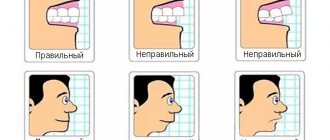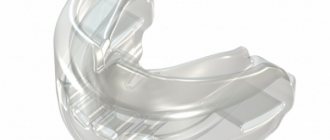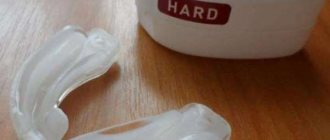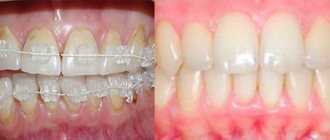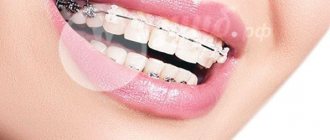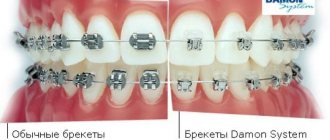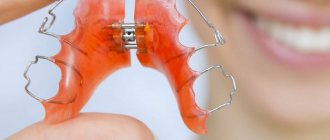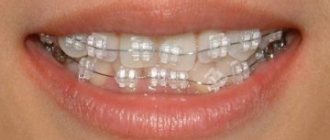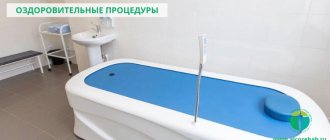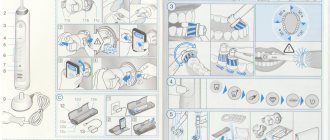The term "adhesion"
Composite materials have been used for more than 30 years in dental practice and they are the ones that receive special attention today. In recent years, it has been possible to significantly improve the physical and optical properties of composite materials, identify new mechanisms of adhesion to dental tissues, and improve the clinical methods of using composites. All this has led to the expansion of indications for the use of composites. They are used for the restoration of anterior teeth with defects of carious and non-carious origin, as well as for the aesthetic and functional elimination of various dental malformations.
In order to improve the adhesion of the material to the tooth tissues, in recent years, special attention has been paid to adhesive agents that improve the fixation of the filling material not only to the surface of the enamel, but also to the dentin. Work on the use of adhesive methods in dental restoration has been going on for almost fifty years.
The word "adhesion" comes from the Latin "adhaesio", which means "sticking", sticking together of the surfaces of two dissimilar solids or rigid bodies. The terms "adhesion" and "adhesive system" in dental terminology describe materials that, when applied to a surface, can bond together, resisting separation and transmitting load through the bonding surface. Attachment force or adhesion force is measured by the force that an adhesive can withstand without breaking.
Damaged product:
In many cases, fillings fail because they used expired or evaporated adhesive.
What to do: Do not use expired products and follow the manufacturer's storage instructions. After using the contents of the bottle, immediately put the cap on it, otherwise the solvent will evaporate and the material will become unusable before the expiration date. This problem can be avoided if a syringe-release adhesive is used. Return to list
Types of adhesion
In dentistry, there are two types of adhesion:
Mechanical – due to micromechanical adhesion of the material to the tooth tissues;
Chemical – due to the formation of a chemical bond between the material and dentin and enamel.
Only GIC has chemical adhesion. All other materials used in dentistry have mechanical and micromechanical adhesion.
Mechanical adhesion is the connection of materials with hard dental tissues due to mechanical retention with the participation of micromechanical pores and roughness on their surface.
In 1955, Buoncore discovered that the surface of tooth enamel becomes rough after etching with phosphoric acid and this increases the adhesion of methacrylic filling material to the tooth surface. The technique of etching enamel with acid, born in this way 40 years ago, is the basis of modern adhesive methods of dental restoration.
Failure to complete this stage of work leads to disruption of the adhesion of the composite material to the hard tissues of the tooth, which is manifested by the appearance of a marginal gap, microbial invasion, staining of the edges of the filling, post-operative sensitivity, etc.
It should be noted that the strength of adhesion to enamel and dentin is significantly different. Thus, the main problem of ensuring effective adhesion to hard tooth tissues lies in the different anatomical structure of enamel and dentin.
Mechanisms of adhesion of composites to the enamel surface
Enamel consists mainly of inorganic substances; in addition, the enamel contains a small amount of organic substances and water. Under the influence of acids, selective dissolution of the peripheral and central zones of enamel prisms occurs to a depth of 5-10 nm and the transformation of the enamel surface, which under an electron microscope becomes similar to a honeycomb or a horseshoe shape, or a combination of both forms.
As a result of mechanical beveling of enamel prisms and treatment of enamel with acid, the active adhesion surface with composite materials increases and the possibility of enveloping the surface layer of enamel with hydrophobic and viscous adhesives improves. Due to their high viscosity, they penetrate slowly to the entire depth of the etched enamel. After polymerization of the adhesive, processes are formed in the interprismatic areas, which mechanically adhere to the enamel surface and thus contribute to the microretention adhesion of the composite to the enamel surface.
Enamel etching
When etching enamel with acid, a layer 10 microns thick is removed from the surface and micropores 5-50 microns deep are formed.
The effect of acid etching of enamel depends on several factors:
type of acid used;
acid concentration;
forms of acid application (gel or liquid);
etching time;
time of rinsing with water;
ways in which etching is activated;
instrumental treatment of the enamel surface before etching;
chemical composition and condition of enamel;
enamel of baby or permanent teeth;
degree of enamel mineralization.
Most often in modern dentistry, phosphoric acid is used for acid etching of tooth tissue. The most optimal acid concentration is 30-40%. In some cases, the use of weak solutions of organic acids is recommended for etching dentin.
To prevent phosphoric acid from spreading to areas of the tooth where acid etching is undesirable, etchings are made in the form of colored gels.
The duration of acid etching of enamel is usually 30 seconds. Experimental studies using SEM showed that there were no differences in the degree of porosity of the enamel surface between exposures of 30 seconds and 60 seconds. In addition, it has been proven that exposure to acid for more than 60 seconds leads to the destruction of enamel prisms and deterioration of adhesion.
Depending on the resistance of the enamel, it is recommended to change the application time of the etching gel: with low enamel resistance it is reduced to 15 seconds, and with increased resistance it increases to 60 seconds.
The duration of removal of the etching with a stream of running water should be equal to the duration of exposure to the acid, i.e. 30 seconds.
To increase the adhesion force, it is recommended to create a bevel of the enamel, which allows increasing the area of contact of the composite with the enamel. The strength of this connection increases when it is formed along the cross section of enamel prisms, since in this case the interprismatic substance dissolves during etching, forming wider and deeper pores.
4.Blowing with air and drying:
Excessive thinning of the adhesive layer through swelling leads to the formation of an oxygen-inhibited layer, which does not allow for high-quality polymerization. If the adhesive layer is too thick, it may still contain solvent. What to do: Apply a thick layer of adhesive - the main part of the liquid is the solvent, which must evaporate. Dry the material with a light, continuous stream of air rather than a strong, short blast of air. Follow the manufacturer's recommendations for timing.
Mechanisms of adhesion of composites to the dentin surface
The main problem in ensuring effective adhesion to dentin is its structure. The diacrylates that make up the composites have fairly high adhesiveness to tooth enamel, but in relation to dentin they behave as hydrophobic substances that do not adhere well to its surface, which is due to the peculiarities of the structure of dentin.
Dentin consists of 45% mineralized components, 30% organic structures, and 25% water. The nature of living dentin is such that its surface is always wet, and drying under clinical conditions is practically impossible. Due to the speed of fluid movement in the dentinal tubules, complete renewal of moisture repeatedly occurs on the surface of the dentin. In clinical conditions, even after drying the carious cavity, unnoticeable residual moisture is observed, which can affect the strength of the bond between dentin and composite. In this regard, dentinal adhesive systems must be hydrophilic, i.e. water compatible.
Another problem in the mechanism of adhesion of the composite to dentin is the smear layer, which is formed as a result of instrumental processing of dentin and consists of hydroxyapatite particles, destroyed remains of odontoblasts and denatured collagen fibers. Depending on the type of preparation, this layer reaches a thickness of up to 5 nm; it clogs the dentinal tubules and covers the intertubular dentin like a gasket. If at first it was considered as an insulator that prevents the penetration of microorganisms into the dentinal tubules, now there is no doubt that it interferes with the adhesion of the composite to the dentin surface and, accordingly, the formation of a strong adhesive connection.
In connection with the above, there was a need to search for completely new mechanisms of adhesion of composites to dentin, different from the mechanisms of adhesion to enamel.
Analyzing various adhesive systems for dentin and their adhesion mechanisms, two approaches are fundamentally distinguished. In the first case, the smear layer is completely preserved on the surface of the dentin and is impregnated with hydrophilic low-viscosity monomers and is directly used as a connecting layer between the dentin and the composite.
In the second approach, by dissolving the smear layer and superficial decalcification of dentin. This approach is the most common currently.
Dentin etching (conditioning)
In 1979, the Japanese physician Fuzayama first used dentin etching, and since then this procedure has been widely introduced into practice in Japan. In Europe, this happened later, when it was proven that pulpitis after etching is not associated with the damaging effect of acid on the pulp, but with the phenomenon of microleakage and depressurization of fillings. In addition, older generation adhesive systems were incompatible with dentin.
Modern dentin adhesive systems include mandatory pre-treatment of the dentin surface with so-called dentin conditioners, which promote the penetration of hydrophilic monomers into the surface layer of dentin and their chemical adhesion to the hydrophobic monomers of the composite.
Dentin conditioning is a chemical modification of the dentin surface using acids such as citric, polyacrylic, lactic, etc. In this case, the smear layer is removed completely or partially, and the dentinal tubules are also fully or partially opened. In addition, demineralization of the surface layer of dentin occurs, exposure of collagen fibers of the organic matrix and activation of dentin ions and apatites.
Conditioners in some adhesive systems must be removed using a stream of running water. The dentin surface must then be slightly dried. One of the main conditions for high-quality adhesion is the degree of moisture of the dentin after removing the etching solution. This is primarily due to the hyphrophilicity of the primer. Thus, the adhesion force decreases sharply when dentin overdries. In this case, collapse and loss of collagen fibers are noted, which impairs the penetration of the primer between them to form a strong bond. Dentin that is too wet also does not provide sufficient adhesion. The main criterion for the degree of dentin moisture is “sparkling” dentin, on which there are no “wet puddles”.
Subsequent application of a dentin adhesive system (primer) ensures the penetration of hydrophilic monomers into the open dentinal tubules, saturating the demineralized surface layer of dentin and adhesion to its exposed collagen fibers. With the formation of a hybrid zone. The hydrophilic resins that make up the dentinal adhesive penetrate into the dentinal tubules; the spaces previously occupied by hydroxyapatite encapsulate collagen fibers. After polymerization of the adhesive, a thin layer of new substance is formed, consisting of adhesive components and dentin collagen fibers. This is called the hybrid layer.
The hybrid layer not only provides reliable fixation of the composite to dentin, but also is an effective protective barrier against the invasion of microorganisms and chemicals into the dentinal tubules and tooth cavity. In addition, it blocks the movement of cerebrospinal fluid in the dentinal tubules and prevents postoperative sensitivity.
This mechanism of action is used, for example, in dentinal adhesives: Gluma (Bayer), Denthesive (Kulzer) and Scotchbond Multi Purpose (3M).
This adhesion mechanism can also be achieved by treating dentin with so-called self-conditioning primers, which contain, along with hydrophilic monomers, one or another organic acid. Under the influence of these primers, the smear layer of dentin is partially dissolved, and the dentinal tubules are also partially opened. The surface layer of intertubular dentin is demineralized and simultaneously impregnated with hydrophilic monomers. The smear layer is not washed off, but is sprayed, and its sediment falls on the surface of the dentin. The adhesion of the composite to dentin is achieved due to the penetration of polymers into the dentinal tubules and the formation of polymer processes and due to the impregnation of the surface layer of dentin with monomers. This mechanism underlies the following adhesive systems: ART – Bond (Coltene), Scotchbond (3 M) and Syntac (Vivadent).
Thus, an adhesive system for enamel and dentin should have the following properties:
provide good initial and long-term bond strength to enamel and dentin;
have good biocompatibility;
minimize marginal permeability;
prevent secondary caries and marginal staining (as a consequence of marginal permeability);
be convenient and easy to use;
have a long shelf life;
be compatible with a wide range of restorative materials;
should not be toxic and cause sensitization to staff and patients;
should isolate the tooth surface from oral fluids.
For dentin adhesive, we add three more requirements:
penetrate into etched dentin;
have hydrophilic properties;
If possible, remove the smear layer.
Adhesive systems for enamel
Enamel adhesive systems (adhesives) consist of hydrophobic liquid monomers of composite materials, which, due to micromechanical adhesion, ensure adhesion to tooth enamel. It should be noted that these adhesives do not provide adhesion to dentin, so it is necessary to either isolate the dentin from toxic effects with an insulating gasket or use a dentin adhesive system (primer).
Chemical Cure Composite Kits contain only enamel adhesives and are chemically cured.
Stages of working with adhesive systems for enamel:
etching the enamel surface for 30 seconds using 37% phosphoric acid, which is part of the etching gels;
removing the etching gel with a stream of running water for 30 seconds;
drying the enamel and controlling the quality of the etching (etched enamel has a matte tint);
mixing the components of the adhesive system in a 1:1 ratio;
introducing the adhesive system into the carious cavity using an applicator (applied to prepared enamel and an insulating lining);
distribution of the enamel adhesive system using a weak air stream;
introduction of composite material.
Adhesive systems for enamel included in sets of light-curing composite materials are single-component. In addition to them, the set includes an adhesive system for dentin (primer). The stages of working with these systems will be discussed a little later.
2. Drying dentin:
With some adhesive systems, over-drying of the dentin after etching can severely impair adhesion strength. The collagen fibers exposed to the active substance are destroyed and therefore cannot be completely saturated with the adhesive agent. What to do: To remove water, after etching and rinsing the dentin, quickly blow it with a light stream of air. You can also remove the water with a cotton ball. If the dentin is dry, re-moisten it with a damp cotton ball.
Dentin adhesive systems (primers)
In a fairly short period of time, several generations of adhesive systems for dentin have changed, with development going in two directions - simplifying the procedure for use and improving the adhesion itself. The term “generation” does not, by and large, have any scientific basis; nevertheless, it allows us to structure in a certain way the whole variety of adhesive systems present on the market today. Belonging to a particular generation is determined by the chemical composition, mechanical adhesion indicators and ease of use.
First generation
The first generation of adhesives appeared in the late 70s of the last century. They are characterized by high rates of adhesion to enamel, but adhesion to dentin is extremely low - as a rule, no more than 2 MPa. Adhesion was achieved through the interaction of the bond and calcium contained in the dentin. Naturally, the problem of debonding was extremely acute - difficulties arose within a few months. Therefore, this generation of adhesive systems were recommended for use only in Class III and V cavities. When used in posterior areas, significant postoperative sensitivity was often observed.
Second generation
In the early 80s of the last century, the second generation of adhesives appeared. Here, an attempt was made to utilize the smear layer to obtain higher adhesion rates to dentin. The result was an increase in this indicator to 2-8 MPa, which, of course, is absolutely insufficient for reliable fixation. In addition, microleakage was often observed with these systems, and the problem of postoperative sensitivity was also not resolved. The long-term stability of representatives of this generation was also problematic - after a year, up to 30% of restorations turned out to be unsuccessful precisely because of a significant deterioration in the adhesion index.
Third generation
At the end of the 1980s, two-component adhesive systems appeared, consisting of a primer and an adhesive. This, as well as a significant improvement in mechanical adhesion indicators (8-15 MPa), allows us to distinguish them into a separate generation of adhesive systems - the third in a row. Their appearance made it possible in some clinical situations to minimize tooth preparation, thus opening the era of ultra-conservative dentistry. In addition, with their use, a significant decrease in postoperative sensitivity was observed. For the first time, adhesives of this generation provided adhesion not only to teeth, but also to metals and ceramics.
The main problem was the fragility of bonding agents. Some studies have demonstrated a significant decrease in adhesion rates as early as 3 years after restoration. However, it was from this generation that the routine use of adhesives in restorations of posterior posterior teeth began.
Fourth generation
The advent of fourth generation adhesives in the early 90s transformed dentistry. The index of adhesion to dentin has reached “modern” values – 17-25 MPa, and postoperative sensitivity when using adhesives of this generation has decreased even more.
was revolutionary : after etching, the applied adhesive interacts with the collagen matrix of dentin, forming an intermediate layer that is neither dentin nor adhesive, which is called hybrid. It is the presence of this layer that is responsible for the high strength indicators.
The main success of fourth-generation adhesives owes to the emerging technique of total etching and the concept of wet dentin bonding.
The disadvantages of materials in this group include the presence of two or more components that must be mixed in precise proportions. This seems easy in a “laboratory” setting, but can be a problem in real life. It was precisely due to inaccuracies during mixing that problems arose when using fourth-generation adhesives.
These adhesive systems contain 3 components:
1) conditioner (phosphoric acid in the form of a gel for etching enamel and dentin);
2) primer (a mixture of hydrophilic low-molecular compounds that penetrate wet dentin, saturate it and form a hybrid layer);
3) enamel adhesive system (unfilled resin that ensures the connection of the composite with the hybrid layer and tooth enamel).
Types of 4th generation adhesive systems:
Provides for partial dissolution of the smear layer and partial opening of the dentinal tubules using weak solutions of organic acids included in the primer composition.
Stages of working with 4th generation adhesive systems Type 1:
1. etching the enamel surface for 30 seconds using 37% phosphoric acid, which is part of the etching gels;
2. removing the etching gel with a stream of running water for 30 seconds;
3. drying the enamel and quality control of the etching (etched enamel has a matte tint);
4. applying primer to the dentin of the carious cavity using an applicator (exposure 10 seconds);
5. primer distribution using a weak air stream;
6. introducing the enamel adhesive system into the carious cavity using an applicator (applied to prepared enamel and dentin);
7. distribution of the enamel adhesive system using a weak air stream;
8. photopolymerization of adhesive and primer;
9. introduction of composite material.
Type 2:
Provides for complete dissolution of the smear layer by etching dentin with phosphoric acid.
Stages of working with 4th generation adhesive systems Type 2:
1. etching the enamel surface for 15 seconds using 37% phosphoric acid, which is part of the etching gels, adding the gel to the dentin for 15 seconds;
2. removing the etching gel with a stream of running water for 30 seconds;
3. drying of enamel and dentin (quality control of etching - etched enamel has a matte tint, dentin should not be overdried - moist, shiny);
4. applying primer to the dentin of the carious cavity using an applicator (exposure 10 seconds);
5. primer distribution using a weak air stream;
6. introducing the enamel adhesive system into the carious cavity using an applicator (applied to prepared enamel and dentin);
7. distribution of the enamel adhesive system using a weak air stream;
8. photopolymerization of adhesive and primer;
9. introduction of composite material.
Fifth generation
In the fifth generation adhesives, the mixing problem was eliminated - the “one bottle” concept was implemented, i.e. the adhesive and primer were placed in one container (they became one-component).
The use of one-component systems also involves total etching of enamel and dentin. The mechanism of their connection is similar to the mechanism of adhesion of 4th generation systems. These materials have good adhesion rates to enamel, dentin, ceramics and metal (at the level of 20-25 MPa), but their most important advantage is the absence of the component mixing stage, the poor performance of which led to a decrease in adhesion rates in fourth-generation systems.
Fifth generation adhesive systems are still the most popular because they are easy to use and give predictable results. Postoperative sensitivity when using them is also low.
Stages of working with 5th generation adhesive systems:
1. etching the enamel surface for 15 seconds using 37% phosphoric acid, which is part of the etching gels, adding the gel to the dentin for 15 seconds;
2. removing the etching gel with a stream of running water for 30 seconds;
3. drying of enamel and dentin (quality control of the etching - etched enamel has a matte tint, dentin should not be overdried - moist and shiny);
4. applying the adhesive system to the enamel and dentin of the carious cavity using an applicator (exposure 15 seconds);
5. distribution of the adhesive system using a weak air stream;
6. photopolymerization of the adhesive system;
7. introduction of composite material.
Sixth generation
The next task of developers when improving adhesive systems was the need to remove the etching stage from the list of procedures performed. In sixth generation systems this problem has been solved.
Generation 6 adhesive systems are one-step, self-etching systems that come in 2 bottles and require mixing immediately before use. The system is then applied to the enamel and dentin. At the same time, etching, diffusion into the tooth tissue and the formation of a hybrid zone are ensured.
Compared to adhesive systems of the 4th and 5th generations, they are easier to use, working with them requires less time due to the reduction in the number of steps, and the risk of technical errors is reduced.
However, adhesion to dentin (18-23 MPa) remains virtually unchanged over time, while adhesion to enamel deteriorates.
Stages of working with 6th generation adhesive systems:
1. The components of the adhesive system are mixed outside the oral cavity (inside a disposable package or in a special cell);
2. applying the adhesive system to the enamel and dentin of the carious cavity using an applicator (exposure 15 seconds);
3. distribution of the adhesive system using a weak air stream;
4. photopolymerization of the adhesive system;
5. introduction of composite material.
How to make the right choice
Among all the variety of adhesives, it is sometimes difficult to make the right choice. Dr. Burgess advises paying attention to products that are backed by clinical studies.
What to look for when choosing an adhesive
“have good adhesion strength... suitable for your technique... proven to have long-term research results... can be used in many clinical situations"
“I would look for materials that have good adhesion strengths that will be sufficient for the clinician, as well as materials that have proven themselves clinically.” says Dr. Burgess. “I firmly believe in the effectiveness of those materials that have long-term research results. If an adhesive does not have enough quality research on its use, I would hesitate to use it in my patients.”
Unfortunately, only a few adhesive systems have long-term clinical studies. Dental adhesive Single Bond Universal has the results of 2 and 3 year studies, according to which it shows 94% better results in adhesion when restoring unprepared class V defects.
In addition, the use of universal adhesive systems that can be used in many clinical situations is not only easier to use, but due to this, the risk of medical errors is reduced.
“In my practice, I choose materials that can be used in a variety of techniques and clinical situations, materials that are versatile,” says Dr. Burgess. “If you use the material in multi-applications, you must understand how to use it. Many doctors during lectures tell me “I thought that these materials could be combined when used,” then I look at them and say “You were mistaken, these materials do not combine with each other.” In systems with many components (or bottles, as is the case with adhesives), it is very easy to get confused about the application procedure. However, when using universal materials, this issue is removed and it is possible to simplify the process of use and reduce the time for the procedure. In my opinion, universal materials are the future.”
Adhesive systems continue to improve and at the moment the latest generation of universal adhesives is the best, providing reliable, stable adhesion while being easy to use in the dentist's practice.

